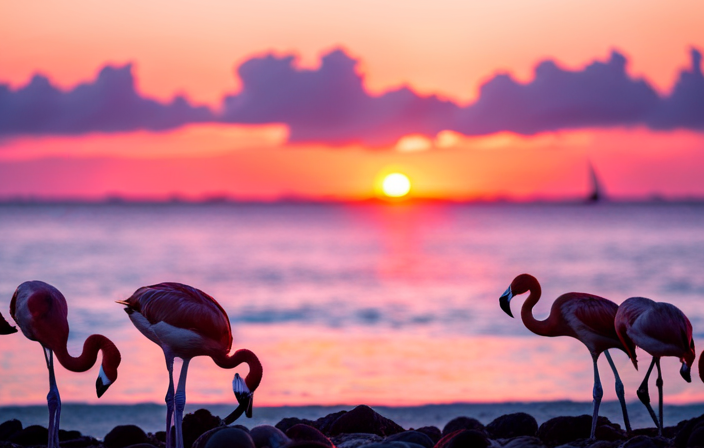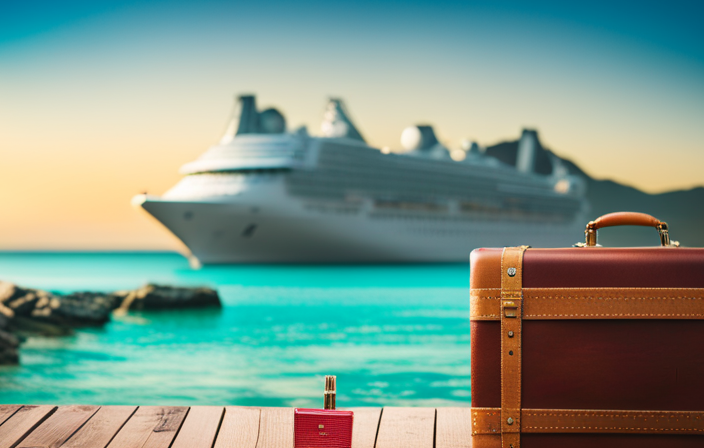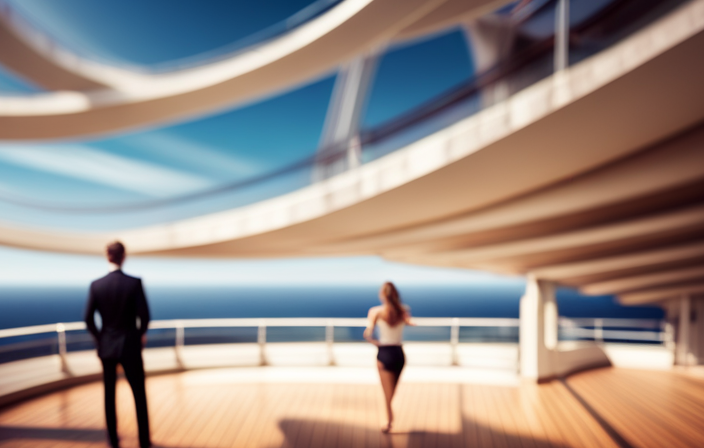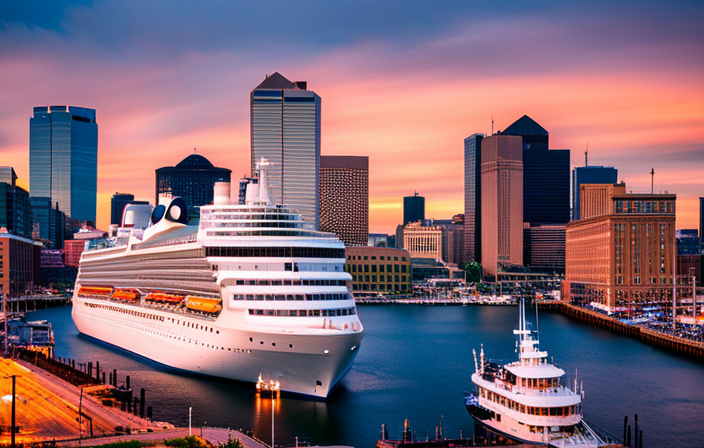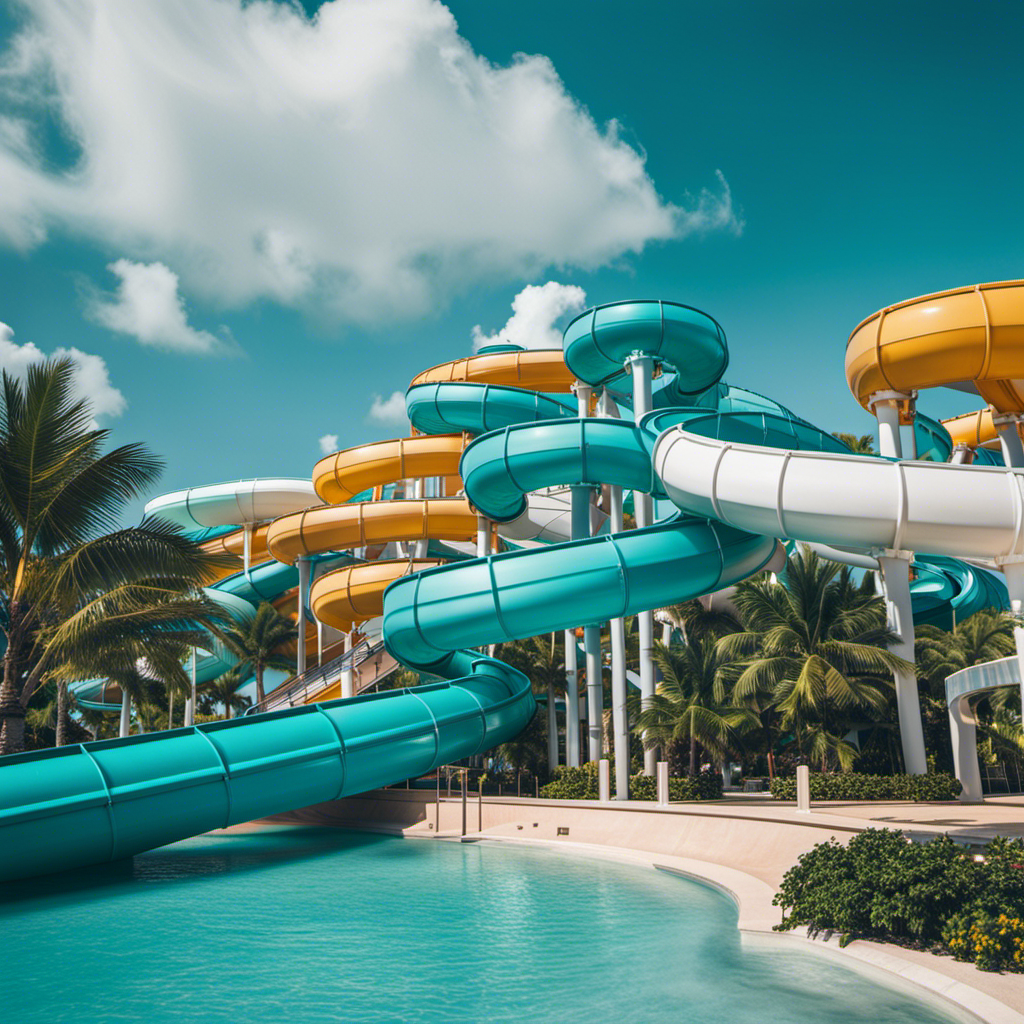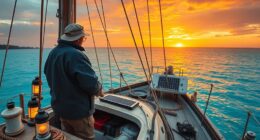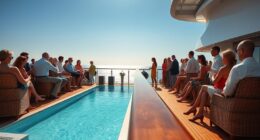As I step off the cruise ship and onto the shores of Bonaire, I am greeted by a world filled with stunning beauty and excitement. Renowned for its striking flamingos and unparalleled diving adventures, this jewel of the Caribbean, nestled close to Curaçao, Aruba, and Venezuela, draws in over 300,000 visitors each year. Bonaire offers an array of natural wonders, from the mesmerizing Bonaire National Marine Park, housing over 450 species of fish, to the enchanting salt pans that are the site of the largest pink flamingo gatherings in North America. This island is a haven of natural splendor waiting to be explored and cherished.
Key Takeaways
- Bonaire is a popular tourist destination, with over 300,000 visitors annually, many of whom arrive by cruise ship.
- Bonaire National Marine Park, established in 1979, is the first marine park in the Caribbean and is known for its diverse marine life and excellent diving opportunities.
- Bonaire’s salt flats cover 13% of the island and produce hundreds of thousands of metric tons of salt each year. The salt flats also house the largest pink flamingo sanctuary in North America.
- The Pekelmeer Flamingo Sanctuary is home to over 10,000 flamingos and offers a unique opportunity to observe these colorful birds in their natural habitat.
Bonaire’s Location and Tourism
I’ve always wanted to visit Bonaire because of its location in the Caribbean and its popularity as a diving and tourism destination. Bonaire’s cultural heritage and local cuisine make it even more enticing. This small island, nestled among the ABC Islands, is a hidden gem waiting to be explored. Bonaire’s cultural heritage is rich and diverse, influenced by the indigenous Arawak people, Dutch colonization, and African slaves. This fusion is reflected in the island’s art, music, and architecture. And when it comes to food, Bonaire’s local cuisine offers a tantalizing array of flavors. From fresh seafood like conch and lionfish to traditional dishes like kabritu stoba (goat stew) and keshi yena (stuffed cheese), every bite is a taste of the island’s vibrant culture. Exploring Bonaire means immersing yourself in its captivating history and savoring its delicious local dishes.
Bonaire National Marine Park
Located in the Caribbean, Bonaire National Marine Park, established in 1979, is the first marine park in the region and covers the entire coastline up to a depth of 200 feet. Here are some key facts about the park:
-
Diving regulations: Bonaire takes marine life conservation seriously, implementing strict diving regulations to protect the fragile ecosystem. Divers must adhere to guidelines such as not touching or feeding marine life, and respecting the coral reefs.
-
Marine life conservation: The park is a haven for marine life conservation, with over 450 species of fish calling it home. From vibrant coral reefs to colorful tropical fish, the park offers divers a unique opportunity to witness the beauty and diversity of the underwater world.
-
Preservation efforts: Bonaire National Marine Park actively engages in preservation efforts, conducting research and monitoring programs to ensure the sustainability of the ecosystem. They work closely with local communities and organizations to educate visitors and promote responsible diving practices.
-
Eco-tourism destination: With its commitment to diving regulations and marine life conservation, Bonaire National Marine Park has become a popular eco-tourism destination. Visitors can explore the park’s pristine waters, marvel at the abundance of marine life, and contribute to the preservation of this natural treasure.
Bonaire’s Salt Flats
Exploring the salt flats on Bonaire, I was amazed by the contrasting pools of pink water caused by algae. The vibrant hues stood out against the white salt beds, creating a stunning visual spectacle. As I ventured closer, I learned about the salt production process that takes place here. Bonaire’s solar salt facility covers a significant portion of the island and produces hundreds of thousands of metric tons of salt each year. The pink pools, although beautiful, are actually a byproduct of the salt production process. The algae thrive in the high salinity and create these striking pools. It was fascinating to witness this natural phenomenon and understand how it contributes to the island’s salt production industry.
Pekelmeer Flamingo Sanctuary
While driving along the road near Pink Beach, I marveled at the vast number of vibrant flamingos in the Pekelmeer Flamingo Sanctuary. It was a breathtaking sight, and I couldn’t help but admire their graceful movements and striking pink feathers. Here are some key highlights of the sanctuary:
-
Flamingo conservation efforts: The Pekelmeer Flamingo Sanctuary plays a crucial role in conserving the Caribbean flamingo population. It provides a safe breeding ground for these magnificent birds, ensuring their survival for generations to come.
-
Wildlife photography opportunities: For photography enthusiasts, the sanctuary offers incredible opportunities to capture these stunning creatures in their natural habitat. The vibrant colors of the flamingos, against the backdrop of the salt flats and the crystal-clear waters, create a picturesque scene that is perfect for wildlife photography.
-
Rich biodiversity: Apart from flamingos, the sanctuary is also home to various other marine animals and bird species. Exploring the area allows you to witness the diverse wildlife that thrives in this unique ecosystem.
-
Educational experiences: The sanctuary provides educational programs and guided tours, where you can learn about the importance of flamingo conservation and the delicate balance of the ecosystem. It’s a great opportunity to deepen your understanding of these fascinating creatures.
-
Serene observation points: Whether you choose to observe the flamingos from the road or from nearby Pink Beach, the sanctuary offers peaceful and serene spots to admire these beautiful birds. Take a moment to soak in the tranquil ambiance and appreciate the wonders of nature.
Visiting the Pekelmeer Flamingo Sanctuary is not only a visual delight but also an opportunity to contribute to the preservation of these magnificent creatures. Don’t miss out on this unique experience during your visit to Bonaire.
Highlights of Bonaire
I was amazed by the stunning salt flats and the pink water pools in Bonaire, a unique experience that left me in awe. Bonaire is truly a paradise for diving enthusiasts. The crystal-clear waters and vibrant coral reefs make it a top destination for underwater exploration. Whether you’re a beginner or an experienced diver, Bonaire offers a variety of diving experiences for all levels. From exploring shipwrecks to swimming alongside colorful marine life, the underwater world of Bonaire is a sight to behold. And when you’re not diving, don’t forget to indulge in the local cuisine. Bonaire is known for its delicious seafood and fusion of Caribbean and Dutch flavors. From fresh fish to mouthwatering stews, the local dishes will satisfy your taste buds and give you a true taste of the island. So, plunge into the depths of Bonaire’s diving experiences and savor the flavors of its local cuisine.
Diving in Bonaire
After exploring the stunning salt flats and observing the majestic flamingos in Bonaire, it’s time to dive into the crystal-clear waters that surround this Caribbean paradise. As an avid diver, I can attest to the fact that Bonaire is a diver’s dream come true. With over 350 dive sites to choose from, there is something for every level of diver. The underwater world of Bonaire is teeming with vibrant coral reefs, colorful fish, and even the occasional sea turtle or dolphin. And for those interested in underwater photography, Bonaire offers the perfect backdrop to capture those breathtaking shots. Whether you’re a beginner or an experienced diver, Bonaire also offers a range of scuba diving courses to enhance your skills and knowledge. So grab your gear and get ready for an unforgettable diving adventure in Bonaire!
Exploring the Salt Flats
Located on the southwestern coast of Bonaire, the salt flats cover 13% of the island and are a fascinating natural wonder. As I stood on the edge of the flats, I was mesmerized by the vast expanse of shimmering white salt stretching out before me. Here are three things that make the salt flats truly unique:
-
Salt Production: The salt flats are not just a sight to behold, but also a thriving salt production facility. Bonaire produces between 300,000 and 500,000 metric tons of salt annually, collected in the form of white pyramids, each containing 10,000 metric tons.
-
Pink Water Pools: As I walked further into the flats, I noticed the stunning contrast of pink water pools amidst the white salt. These pools get their hue from algae, creating a surreal and picturesque landscape.
-
Flamingo Sanctuary: In addition to salt production, the flats also house the largest pink flamingo sanctuary in North America. Over 10,000 flamingos call this sanctuary home, making it a must-visit spot for nature lovers.
Exploring the salt flats was an unforgettable experience, where I witnessed the beauty of salt production and the enchanting pink water pools.
Flamingo Watching in Bonaire
One of the highlights of visiting Bonaire is observing the vibrant Caribbean flamingos in their natural habitat at the Pekelmeer Flamingo Sanctuary. These graceful creatures with their long, slender legs and striking pink plumage are truly a sight to behold. As I stood at the edge of the sanctuary, I couldn’t help but marvel at their beauty and elegance. The flamingos moved in unison, their synchronized dance reflecting their strong social bonds. They waded through the shallow waters, delicately balancing on one leg as they foraged for food. It was fascinating to witness their unique behaviors and interactions. The sanctuary is not only a sanctuary for the flamingos, but also a testament to the conservation efforts in Bonaire. With its protected status, the sanctuary provides a safe haven for these magnificent birds, ensuring their continued existence for generations to come.
| Flamingo Behavior | Conservation Efforts | Sanctuary Protection |
|---|---|---|
| Synchronized dance | Safe haven for flamingos | Protected status |
| Balancing on one leg | Continued existence of flamingos | Conservation efforts |
| Foraging for food | Preservation of habitat | Ensuring future generations |
Frequently Asked Questions
What Is the Best Time of Year to Visit Bonaire for Diving and Flamingo Watching?
The best time to visit Bonaire for diving and flamingo watching is during the dry season from January to April. The clear waters and calm weather make it ideal for underwater exploration and observing the vibrant flamingos in their natural habitat.
Are There Any Specific Rules or Regulations for Diving in Bonaire National Marine Park?
Yes, there are specific diving regulations in Bonaire National Marine Park to ensure safety. Dive flags are required, and divers must follow buoyancy control rules and respect marine life.
Can Visitors Participate in the Salt Collection Process at Bonaire’s Salt Flats?
Yes, visitors can participate in the salt collection process at Bonaire’s salt flats. It’s a unique eco tourism opportunity where you can learn about the salt production and even help gather salt.
Are There Any Guided Tours Available to Explore the Pekelmeer Flamingo Sanctuary?
Yes, there are guided tours available to explore the breathtaking Pekelmeer Flamingo Sanctuary. Immerse yourself in the beauty of over 10,000 flamingos and other captivating marine animals and bird species.
What Other Activities or Attractions Are There on Bonaire Besides Diving and Flamingo Watching?
There are plenty of other activities and attractions on Bonaire besides diving and flamingo watching. Some highlights include exploring snorkeling spots with vibrant coral reefs and bird watching trails to spot various species.
Conclusion
In conclusion, Bonaire truly is a Caribbean paradise for diving and flamingos. With its stunning marine park and diverse underwater world, it is a dream destination for water enthusiasts. The salt flats, with their vibrant pink pools, create a unique backdrop for the largest population of flamingos in North America. Whether you’re exploring the depths of the ocean or observing these magnificent birds, Bonaire offers a range of natural wonders and activities for visitors to enjoy. As the saying goes, "Take only memories, leave only bubbles," and Bonaire is sure to create unforgettable memories for all who visit.

